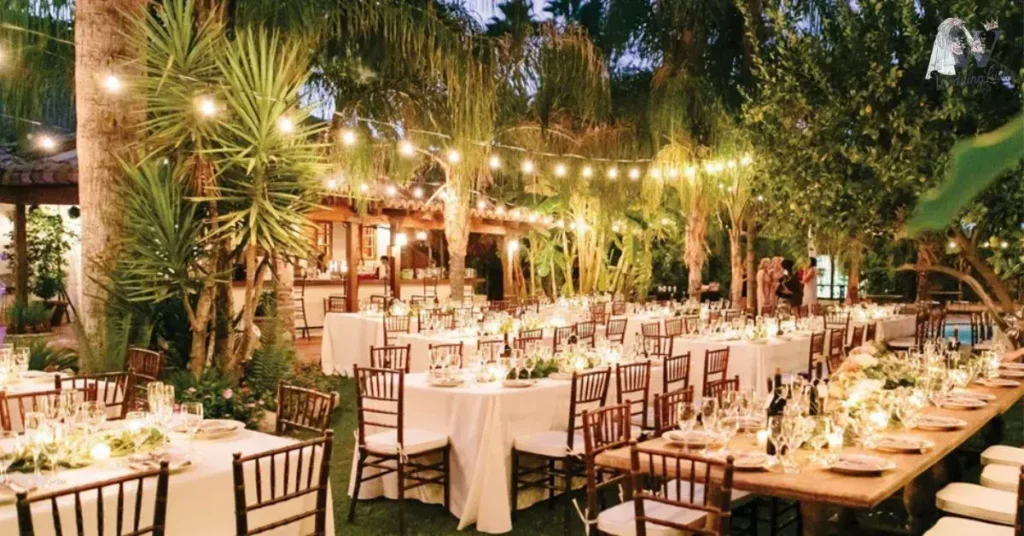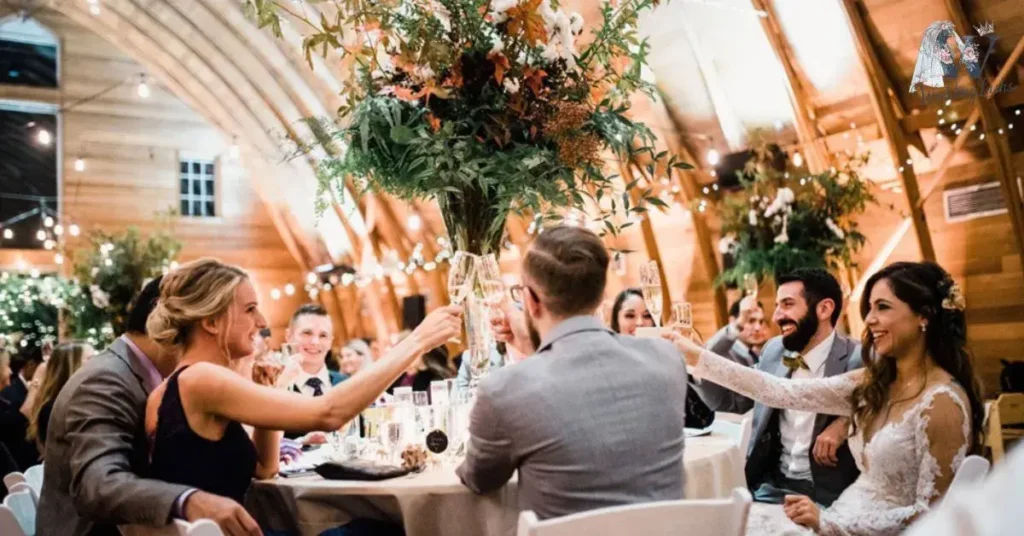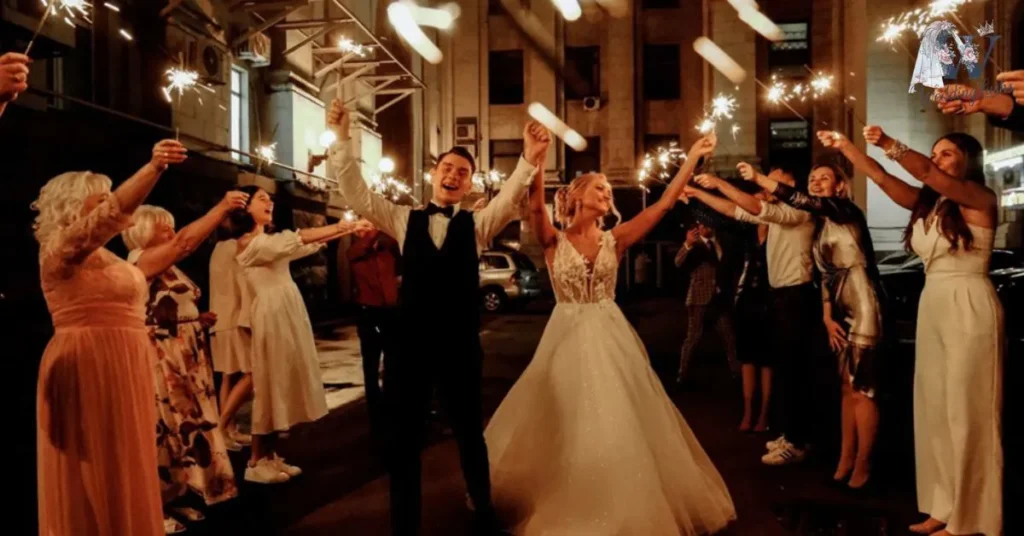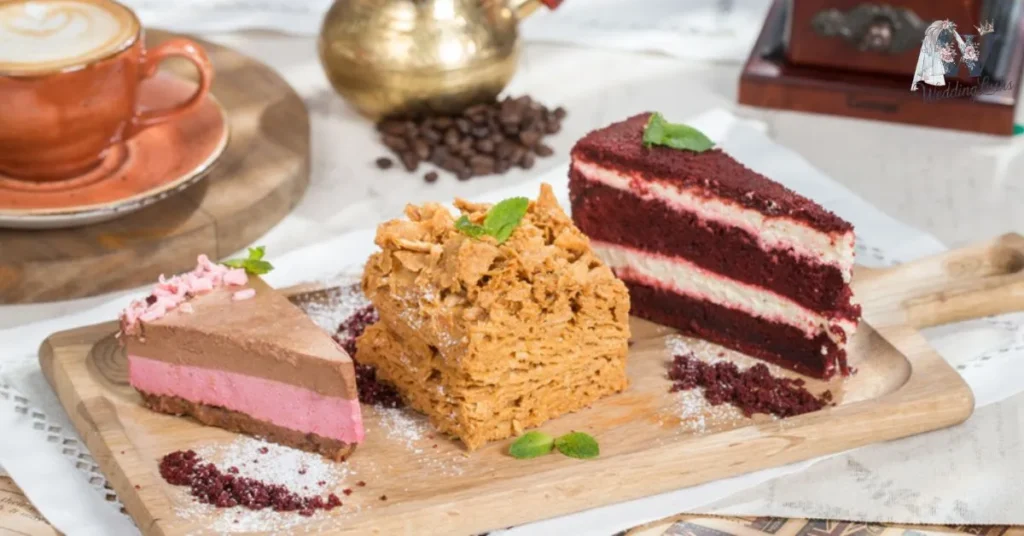Weddings typically last between 3 to 6 hours, including the ceremony and reception. The duration can vary based on the size, formality, and specific schedule of the event.
Discover the key timeframes and what to expect for a seamless and enjoyable celebration. Wondering how long a wedding typically lasts? From the ceremony to the reception, understanding these durations can help you plan better and make the most of the special day. Get ready to navigate every moment with confidence and ease.
Weddings can vary in length based on formality, size, and traditions, usually lasting a few hours to a full day. Proper timing ensures a smooth, enjoyable celebration where every key moment is thoughtfully planned and appreciated.
Typical Wedding Timeline for A 4 p.m. ceremony
A typical wedding timeline for a 4 PM ceremony starts with venue preparation around 10 AM, followed by the bridal party’s preparations at 11:30 AM and the groomsmen’s at 1:30 PM. The couple may have a first look at 3 PM before final touches are made at the ceremony venue by 3:30 PM. The ceremony begins at 4 PM, lasting 30 to 45 minutes, and is followed by family photos at 4:50 PM and cocktail hour at 5 PM.
The reception kicks off at 6 PM with the wedding party’s entrance, toasts, and possibly the couple’s first dance. Cake cutting and dessert are served at 7:30 PM, with dancing starting at 7:45 PM. The evening concludes with a grand send-off at 10 PM, where the couple departs as guests bid them farewell. This timeline ensures a smooth flow and a memorable celebration.
20 80 Rules Wedding
The 20/80 rule in weddings suggests focusing on the 20% of details that will create 80% of the impact. Prioritize essential elements like venue, food, and photography, which guests will remember most. This strategy allows you to focus your time and resources on what truly matters, making the planning process more efficient.
By simplifying and concentrating on the key aspects, you can reduce stress and stay within budget. This approach ensures a beautiful and memorable wedding without getting overwhelmed by minor details, allowing you to fully enjoy your special day.
Also read this blog: Priyanka Chopra Wedding Dress
60 20 20 Rules Wedding
The 60/20/20 rule in weddings emphasizes allocating your budget and time wisely. Spend 60% on the most important elements like the venue, catering, and photography, as these are the core aspects that will define the day. The next 20% should go towards essential details like attire, entertainment, and floral arrangements, which enhance the overall experience.
The final 20% can be reserved for personal touches and extras that make your wedding unique, such as favors, décor, or a special exit. By following this rule, you ensure that your priorities are met while still allowing room for creative flair, leading to a well-balanced and memorable celebration.
Before Ceremony
Before the ceremony, final preparations take place to ensure everything is perfect. The couple and wedding party get ready, with hair, makeup, and attire being finalized. Guests begin to arrive, setting the stage for the main event.
10:00 A.M. Venue Preparation
At 10:00 A.M., venue preparation begins to set the scene for the wedding. Decorations, seating, and floral arrangements are carefully arranged to create the desired ambiance. This early start ensures everything is in place well before guests arrive.
11:30 A.M. Bridal Party Prep
At 11:30 A.M., the bridal party starts their preparations for the big day. Hair, makeup, and final touches on attire are completed, ensuring everyone looks their best. It’s a time for bonding and excitement as the day unfolds.
1:30 P.M. Groomsmen Prep
At 1:30 P.M., the groomsmen begin their preparations for the ceremony. They get dressed, make final adjustments, and share a few moments of camaraderie. This time allows them to get ready and focus before the event begins.
3:00 P.M. First Look
At 3:00 P.M., the couple shares their first look, a private and emotional moment before the ceremony. They see each other in their wedding attire for the first time, capturing this special memory with photos. It’s a beautiful, intimate start to the celebration ahead.
3:30 P.M. Final Touches At Ceremony Venue

At 3:30 P.M., final touches are made at the ceremony venue to ensure everything is perfect. Decorations are adjusted, and seating arrangements are checked. This ensures the venue is ready for guests and the ceremony can proceed smoothly.
4:00 P.M. Ceremony
At 4:00 P.M., the wedding ceremony begins, marking the most significant moment of the day. The couple exchanges vows, surrounded by loved ones in a heartfelt and emotional setting. The ceremony typically lasts 30 to 45 minutes, filled with meaningful traditions and personal touches.
How Long Is A Wedding Ceremony?
A wedding ceremony typically lasts between 30 to 45 minutes. The length can vary depending on the rituals and traditions involved. This timeframe allows for vows, readings, and any special elements without feeling rushed.
After Ceremony and Cocktail Hour

After the ceremony, guests transition to cocktail hour, where they can mingle and enjoy drinks. The couple and wedding party often take additional photos during this time. It’s a relaxed and social break before the reception festivities begin.
4:50 P.M. Family Pictures
At 4:50 P.M., family pictures are taken immediately after the ceremony. These formal photos capture the special moments with close relatives. It’s a brief but important time to create lasting memories with loved ones.
5:00 P.M. Cocktail Hour
At 5:00 P.M., the cocktail hour begins, offering guests a chance to relax and socialize. They enjoy drinks and light appetizers while the couple finishes their photos. This hour sets a festive tone before the reception starts.
5:30 P.M. Couples’ Pictures
At 5:30 P.M., the couple takes their special wedding portraits together. This time allows them to capture beautiful and intimate photos in various settings. These pictures become cherished memories of their day.
Reception
The reception is the celebration that follows the wedding ceremony, where guests gather to eat, drink, and dance. It begins with the couple’s grand entrance and often includes speeches, toasts, and the first dance. A meal is served, followed by dessert and cake cutting. The evening is filled with music, dancing, and joy as everyone celebrates the newlyweds.
How Long Is A Wedding Reception?
A wedding reception typically lasts about 4 to 5 hours. This time frame includes dinner, speeches, and plenty of dancing. It allows for a full evening of celebration and enjoyment.
6:00 P.M. Wedding Party Entrance and Toasts

At 6:00 P.M., the wedding party makes a grand entrance into the reception, setting an exciting tone. This is followed by heartfelt toasts from close friends and family, celebrating the couple. It’s a moment filled with emotion, laughter, and love.
6:15 P.M. Dinner
At 6:15 P.M., dinner is served, offering guests a chance to enjoy a well-prepared meal. The meal is often accompanied by conversations and socializing, creating a warm atmosphere. This time allows everyone to relax and refuel before the evening’s festivities continue.
7:30 P.M. Cake Cutting And Dessert

At 7:30 P.M., the cake-cutting ceremony takes place, marking a sweet moment for the couple. Guests enjoy dessert and other treats, adding to the celebration. This time highlights the joy and indulgence of the evening.
7:45 P.M. Dancing
At 7:45 P.M., the dance floor opens for guests to enjoy the music and celebrate. The couple often shares their first dance, followed by friends and family joining in. It’s a lively and energetic part of the reception, filled with fun and movement.
10:00 P.M. Grand Send Off
At 10:00 P.M., the grand send-off begins, marking the end of the wedding celebration. The couple departs amid cheers and festive farewells from their guests. It’s a memorable and joyful conclusion to a beautiful day.
Factors Influencing Wedding Length
Several factors influence the length of a wedding, including the type of ceremony and reception. Traditional ceremonies with multiple rituals may take longer than simpler ones, while cultural or religious practices can extend the duration.
The size of the guest list and the complexity of the reception can also impact the overall length. Large weddings with extensive entertainment or multiple courses may extend the evening, while smaller, more intimate celebrations often wrap up more quickly.
Planning For Post-Ceremony Activities
Planning for post-ceremony activities involves organizing the timeline for what happens immediately after the vows. This includes scheduling time for family photos, which typically follow the ceremony and allow for capturing important memories. The cocktail hour provides guests with a chance to mingle while the couple finishes their photos and transitions to the reception.
It’s also essential to coordinate the flow of events, such as the timing for dinner, speeches, and dancing. By planning these activities carefully, you ensure a smooth transition from the ceremony to the celebration, allowing everyone to enjoy the festivities without feeling rushed. Proper scheduling helps create a memorable and enjoyable experience for both the couple and their guests.
Timeline For Multi-Cultural Or Traditional Weddings
A timeline for multi-cultural or traditional weddings often involves intricate planning to accommodate various customs and rituals. These weddings may include multiple ceremonies, such as a religious service and cultural rituals, each with its own schedule. The day could start with early morning preparations and rituals, followed by a mid-day ceremony and a formal reception in the evening.
Planning for these events requires careful coordination to ensure all traditions are respected and executed smoothly. The timeline should account for additional time between ceremonies for guests to transition and for any special cultural elements. By integrating these practices thoughtfully, you can create a seamless and respectful celebration that honors all aspects of the couple’s heritage.
Creating A Realistic Wedding Day Timeline
Creating a realistic wedding day timeline involves planning each event with sufficient time to ensure a smooth flow. Consider factors like preparation time, travel between locations, and potential delays. A well-organized schedule helps keep the day on track and minimizes stress for everyone involved.
- Detail Each Event: Break down the day into specific events, such as preparation, ceremony, reception, and special activities, with estimated start and end times.
- Allow Buffer Time: Include extra time between events to accommodate any unexpected delays or transitions, ensuring a smooth flow throughout the day.
- Coordinate with Vendors: Confirm schedules with vendors and ensure their arrival times align with your timeline to avoid last-minute issues.
- Consider Guest Comfort: Plan for breaks and refreshments, especially if there are long gaps between activities, to keep guests comfortable and engaged.
- Review and Adjust: Regularly review and adjust the timeline based on feedback from the couple, bridal party, and other key participants to address any changes or concerns.
Extended Wedding Events: What’s Involved?
Extended wedding events often include additional celebrations beyond the standard ceremony and reception. These may involve pre-wedding activities like rehearsal dinners or welcome parties, as well as post-wedding events such as brunches or casual get-togethers.
Such events add to the overall duration of the wedding festivities, allowing more time for guests to interact and celebrate. They also provide opportunities for unique experiences and memories, making the wedding experience more personalized and memorable.
Timeline Differences For Formal And Casual Weddings
Timeline differences between formal and casual weddings often reflect the level of structure and tradition involved. Formal weddings typically follow a more detailed schedule, including precise timings for the ceremony, reception, and various formalities like toasts and dances. This structured approach ensures that every traditional element is incorporated seamlessly.
In contrast, casual weddings offer more flexibility with a relaxed timeline, allowing for a less rigid schedule. Events may flow more spontaneously, with a focus on comfort and enjoyment rather than adhering to a strict agenda. This flexibility can create a more laid-back atmosphere, where guests and the couple feel at ease.
How Long Is A Small, Intimate Wedding?
A small, intimate wedding typically lasts between 3 to 5 hours, focusing on a more personal and relaxed atmosphere. The ceremony is often shorter, with fewer guests and a simpler schedule, allowing for a more meaningful exchange of vows.
The reception might be less elaborate but still includes essential elements like a meal and some socializing. The reduced size of the event allows for a more flexible timeline, making it easier to adapt to the couple’s preferences and create a memorable experience.
How long are you expected to stay at a wedding?
At a wedding, it’s generally expected that guests stay for the entire ceremony and a good portion of the reception. This usually means arriving at least 30 minutes before the ceremony begins and staying through dinner and key moments like speeches and dancing.
Staying until the end of the reception, especially if you’re close to the couple, is a sign of respect and appreciation for their special day. However, it’s polite to leave at a reasonable time if you have other commitments or are not as familiar with the couple.
Final Words
Understanding the typical duration and expectations for weddings helps ensure a smooth and enjoyable experience for both guests and hosts. Weddings can vary widely in length depending on their formality and scale, with traditional ceremonies and large receptions often lasting several hours. Small, intimate weddings tend to be shorter and more flexible, allowing for a relaxed and personal atmosphere. Whether attending a grand affair or a cozy gathering, being mindful of the expected timeframes and schedule can enhance the celebration and demonstrate respect for the couple’s special day.
Ultimately, staying engaged and present throughout the key moments of a wedding, from the ceremony to the reception, shows your support and appreciation. Adapting to the specific timeline of the event and understanding the hosts’ preferences will ensure that you contribute positively to the day’s success. A thoughtful approach to your attendance can help make the wedding memorable and enjoyable for everyone involved.
Frequently Asked Questions
Is 4 hours long enough for a wedding reception?
Yes, 4 hours is typically enough for a wedding reception. It allows time for dining, toasts, dancing, and socializing. This duration generally provides a balanced and enjoyable experience for guests.
How long to dance at a wedding?
Dancing at a wedding usually lasts about 2 to 3 hours during the reception. This timeframe allows for the couple’s first dance, followed by open dancing for guests. It provides ample opportunity for everyone to enjoy and celebrate.
Is 5 hours too long for a wedding?
A 5-hour wedding can be perfectly suitable, especially for larger or more formal events. It allows ample time for a detailed ceremony, a full reception with dinner, speeches, and dancing. However, for smaller or more casual weddings, 5 hours might feel extended and less necessary.
Is a 100 person wedding too small?
A 100-person wedding is not too small; it’s a manageable size for a warm and intimate celebration. It allows for personalized interactions and a more relaxed atmosphere. This size can make the event feel both special and accessible.
Is it okay to wear red to a wedding?
Wearing red to a wedding is generally acceptable, though it’s best to consider the couple’s preferences and the wedding dress code. Red can be a bold and elegant choice, but ensure it doesn’t overshadow the bride or the formal tone of the event.
